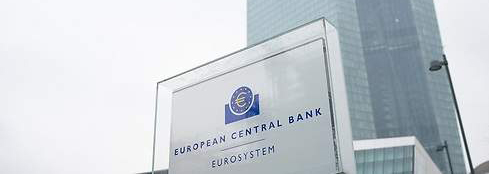La inflación desciende en noviembre y el tono de los bancos centrales se mantiene restrictivo
19 December de 2022

The improvement in the macroeconomic data, coupled with the easing of the restrictions of China’s Covid-zero policy, may prove to be the catalysts for the start of the so-called “Christmas Rally”. However, the first half of December was mixed, depending on the asset class. In terms of equity, the main indices recorded slight declines (S&P 500 ~ 2% // STOXX50 ~ -1%). As for fixed income, high yield credit spreads remained at levels of around 440 bp. With regard to government debt, the curves in the United States moved very tentatively downwards.
- Inflation falls in November
Just a few days ago, the inflation figures for November for the United States and some Eurozone countries were released. In both regions, the figure was lower than that expected by the market, prompting positive reactions.
In the United States, annual inflation fell to 7.1%, set against the expected figure of 7.3% and that of 7.7% in October. The main items that have halted the upturn in inflation have basically been energy and consumer goods such as second-hand vehicles. Meanwhile, property assets (one of the main components, with a 33% weighting in the price index) have begun to display signs of peaking in the coming months, as a result of which we should start to see declining figures for this item.
In Europe, the lag in the cycle has meant that the CPI levels remain higher than those in the United States. Furthermore, the slowdown hasn’t been as pronounced as it has been on the other side of the Atlantic. Germany recorded a CPI of 10%, down from the previous figure of 10.4%.
In both cases, energy has been a clear catalyst leading to a decline in the inflation figures. November was warmer than usual, keeping energy commodity inventory levels high and allowing energy prices and those of some fossil fuels to fall (petrol dropped by 2% in November in the United States).
In the medium term we expect inflation to slow further, although the central banks’ target levels will remain some way away. We believe that inflationary pressures will still exist, partly due to the reopening of the Chinese economy as the Asian giant’s demand for raw materials revives.
Graph 1: Evolution of the Zillow y/y and m/m index since 10/2015

Source: Multi Asset Solutions Goldman Sachs, Zillow, Apartment List, Haver Analytics, Global Investment Research Goldman Sachs and Bloomberg. As at 30 November 2022
2. The Central Banks’ mood remains restrictive
The United States Federal Reserve (Fed) raised its interest rates by 50 bps to the 4.25%-4.50% range and increased the cost of debt to levels not witnessed since 2008, in line with market expectations. In just 10 months, the Fed has raised its interest rates by 375 bps, an annual increase on a scale not seen since the 1970s.
Despite the positive inflation data and certain macroeconomic indicators, Fed Chairman J. Powell confirmed that the rate rises will remain appropriate until it is confirmed that inflation is falling sufficiently and closing in on the 2% target. The Fed also revised its interest rate forecasts to 5.1% in 2023 and 4.1% in 2024, higher figures than those previously indicated.
In Europe, the ECB also raised its interest rates by 50 bps to 2.5%, a figure not seen since 2008. ECB President Lagarde followed up on the Federal Reserve’s restrictive discourse by arguing that inflation in Europe remains very high and that further interest rate rises will be necessary.
Nevertheless, the markets reacted negatively to a slightly more hawkish than expected speech by the central banks and the expectations that a deeper recession will be caused by further increases in borrowing costs.



